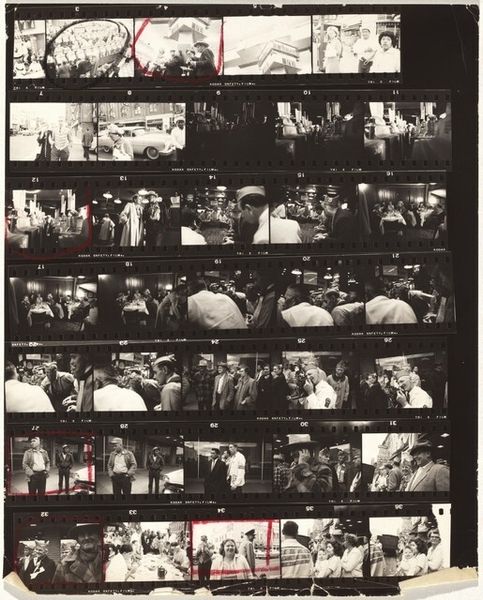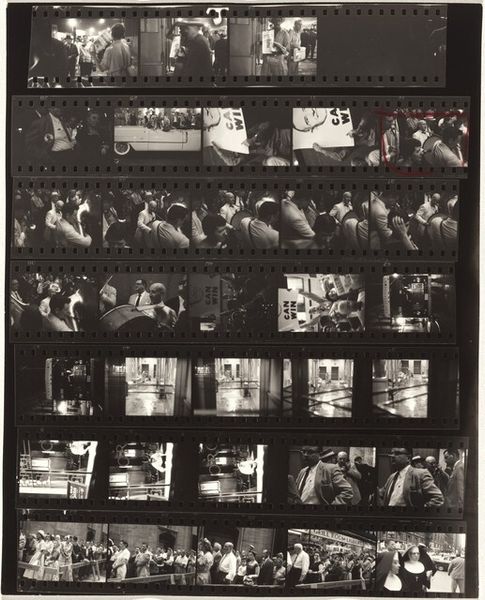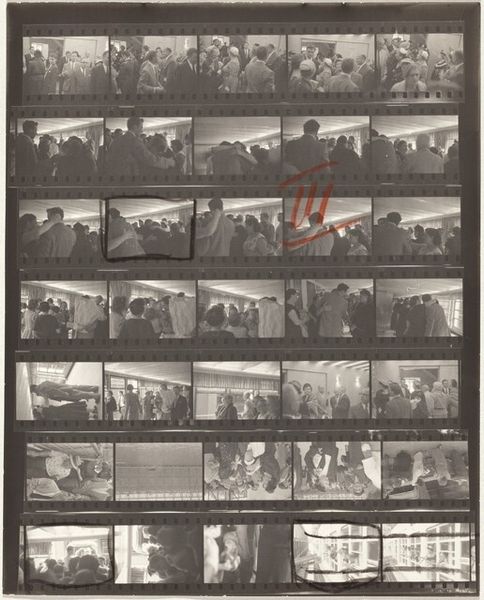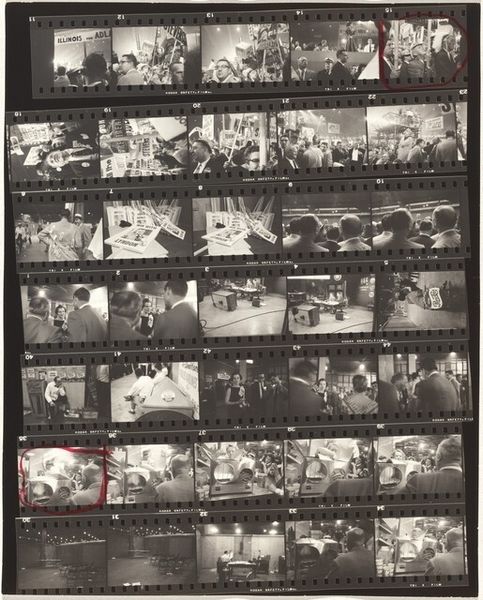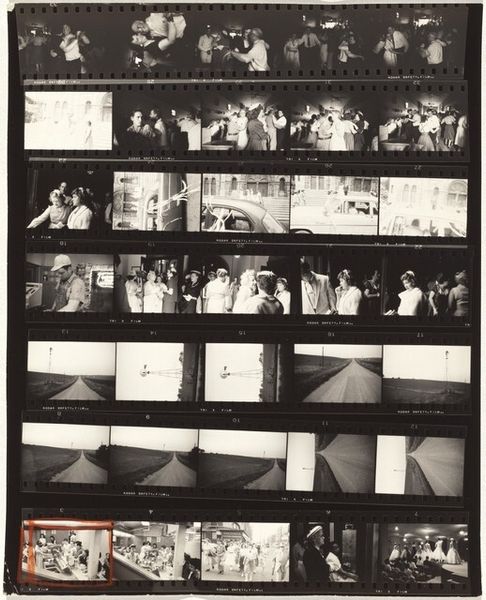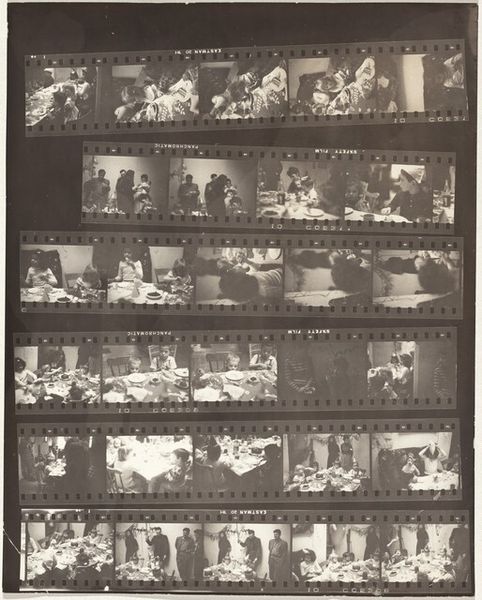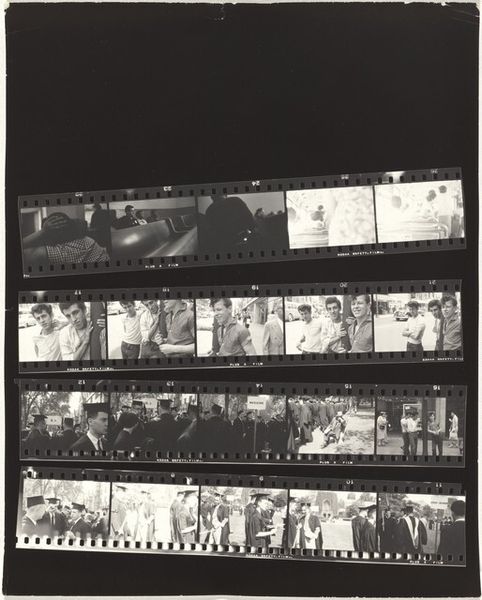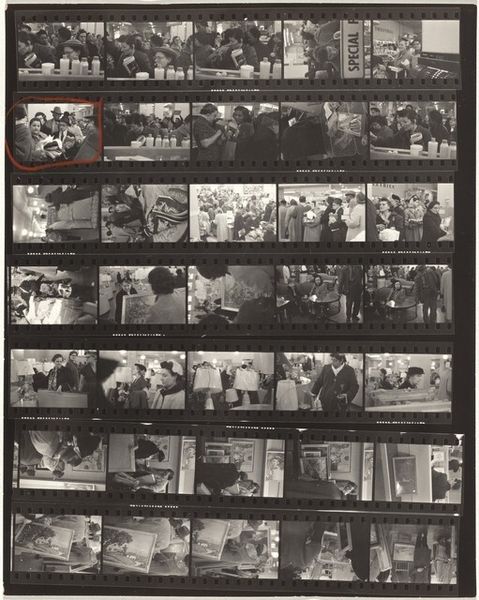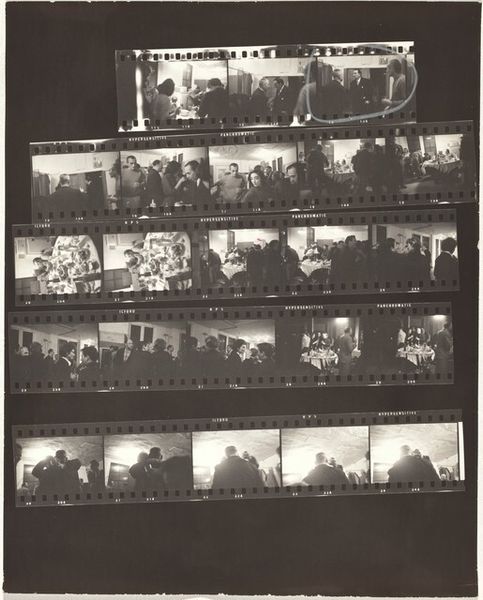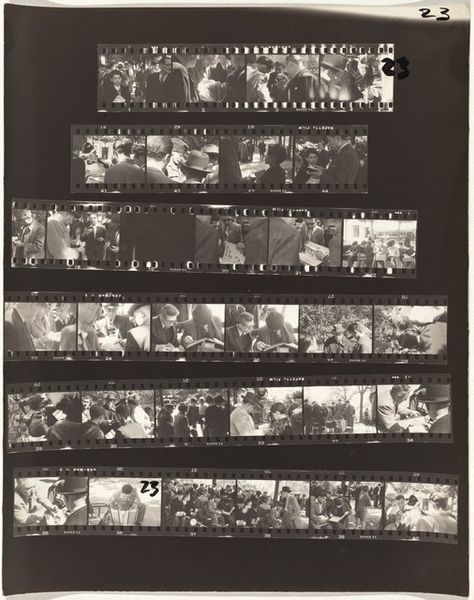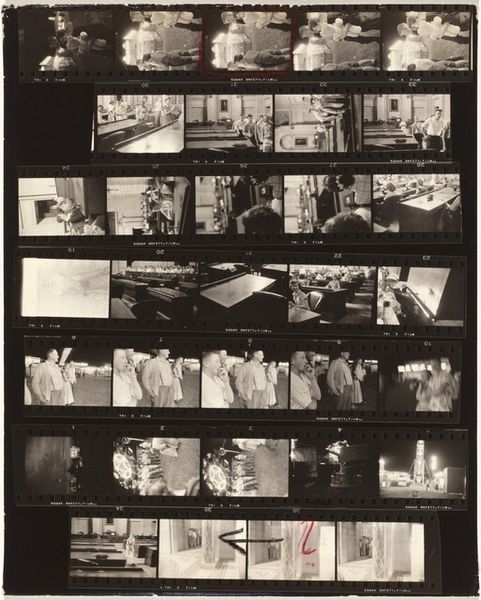
print, photography, gelatin-silver-print
#
portrait
#
abstract-expressionism
#
film photography
# print
#
street-photography
#
photography
#
culture event photography
#
gelatin-silver-print
#
monochrome photography
#
film
#
modernism
#
monochrome
Dimensions: overall: 25.3 x 20.3 cm (9 15/16 x 8 in.)
Copyright: National Gallery of Art: CC0 1.0
Editor: Here we have Robert Frank's "Convention 29," a gelatin silver print from 1956. Looking at this contact sheet, I'm immediately struck by its almost voyeuristic quality. All these faces, snippets of conversations frozen in time... How do you interpret this work, seeing these almost raw, unedited glimpses into this convention? Curator: The contact sheet itself becomes a symbol, doesn't it? A visual record that reveals as much as it conceals. Consider the repetition of certain faces, certain gestures. What might Frank be suggesting about conformity and individuality within the framework of this event, this 'convention'? Do the recurring motifs tell us something about the collective psychology at play here? Editor: That's a fascinating point. It's almost as if he's isolating types – the eager attendee, the skeptical observer, the person lost in thought. But beyond just cataloging types, are there deeper cultural symbols he's playing with, given this was mid-1950s America? Curator: Precisely. Think of the post-war era, the burgeoning consumer culture, and the simmering tensions beneath the surface of American prosperity. Conventions themselves are rituals – carefully orchestrated performances of power, influence, and belonging. Does Frank seem to be celebrating this performance, or critiquing it? Consider the contrast between the sharp focus and the blurred edges. Is this intentional obfuscation a clue to his perspective? Editor: It feels like he's offering a more critical perspective. The candid, almost intrusive style doesn’t allow for a romantic view of the convention, suggesting the presence of anxiety and perhaps a loss of individuality. I’m beginning to see it as commentary on the era. Curator: The very act of assembling these images in this format changes their meaning. Instead of individual moments captured, it becomes an entire narrative. Do you find that narrative compelling, even with its imperfections? Editor: Definitely. Seeing these fleeting moments presented together, rather than individual perfect shots, really lets you feel the undercurrents of that time. Thanks, it feels less like a historical record and more like stepping into the scene. Curator: Indeed. Photography becomes not just about what is seen, but how it is remembered, reconstructed, and re-contextualized through the eyes of the artist, and subsequently, our own.
Comments
No comments
Be the first to comment and join the conversation on the ultimate creative platform.
